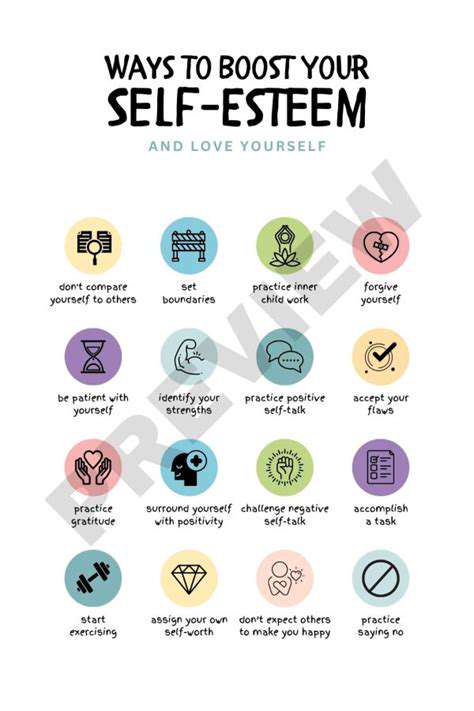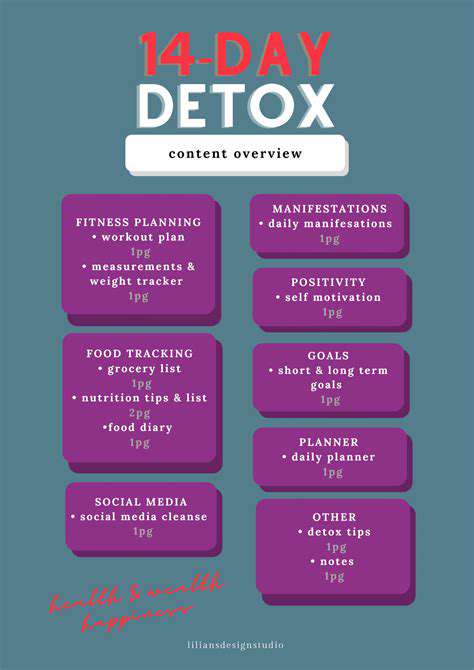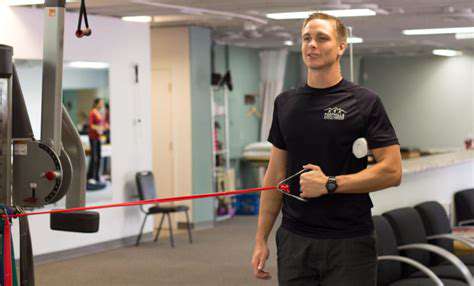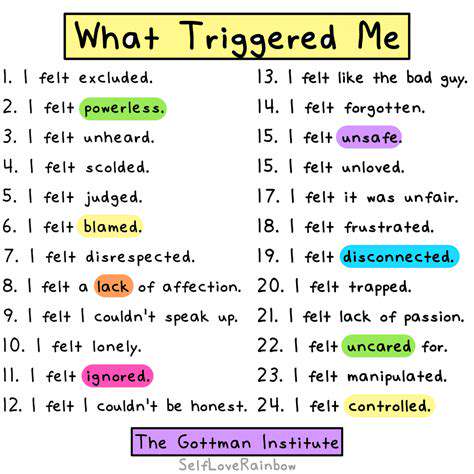How to Prevent Common Running Injuries

Importance of a Proper Warm-up
Warming up properly before exercise is non-negotiable for anyone serious about fitness. It primes your body for action, significantly lowering injury risks while enhancing performance. As your heart rate climbs steadily, blood surges to working muscles, improving their flexibility and range. This preparatory phase transforms stiff muscles into pliable, responsive tissues capable of powerful contractions and smooth releases during exercise. Neglecting this crucial step invites trouble - muscle strains, tears, and other painful injuries that could bench you for weeks.
Begin with gentle cardio like brisk walking or light jogging to stimulate circulation. This blood flow delivers oxygen and nutrients to muscles gearing up for action. Next, incorporate dynamic stretches - controlled motions that preview your workout movements. These prepare joints and muscles specifically for the challenges ahead. This isn't merely injury prevention; it's performance optimization that separates mediocre workouts from outstanding ones.
Key Components of a Cool-down Routine
The cool-down deserves equal attention as the warm-up, serving as your body's transition back to normal. This gradual slowdown prevents blood from pooling in extremities, which can cause dizziness. More importantly, it accelerates metabolic waste removal from muscles, dramatically speeding recovery. Skipping this phase is like slamming the brakes after highway driving - jarring and potentially damaging.
Static stretching takes center stage during cool-downs. Holding positions for 20-30 seconds lets muscles elongate and regain suppleness, combating next-day soreness. Gentle cardio activities like slow cycling or walking further normalize heart rate and circulation. This systematic wind-down is your best defense against DOMS (delayed onset muscle soreness), that unpleasant aftermath many exercisers mistakenly accept as inevitable.
Creating a Personalized Warm-up and Cool-down
One size doesn't fit all when preparing and recovering from exercise. Your routine should mirror your workout's intensity and duration - high-intensity sessions demand more thorough preparation than gentle activity. The most crucial element? Tuning into your body's signals and adjusting accordingly. Discomfort during specific movements signals the need for modification.
Personal factors like fitness level, age, and health conditions should shape your approach. Consulting a trainer or physical therapist helps craft routines that address your unique requirements. This tailored strategy makes the difference between just exercising and training intelligently for long-term success. Always seek medical advice before starting new regimens, especially with pre-existing conditions. Proper preparation and recovery aren't optional - they're the foundation of sustainable fitness progress.
Like any worthwhile endeavor, fitness success builds on solid foundations. It begins with clear goals and strategic planning to achieve them. Anticipating challenges and developing solutions beforehand smooths your path to success while minimizing setbacks. This proactive approach transforms wishful thinking into concrete results.
Nutrition and Hydration: Fueling Your Runs for Optimal Performance and Injury Prevention

Essential Nutrients for Peak Performance
Athletic excellence requires strategic nutrition that goes beyond basic eating. Protein isn't just for bodybuilders - it's the building block for muscle repair that every active person needs. Carbohydrates fuel your engine, while healthy fats support vital bodily functions. This nutritional triad works synergistically to power performance and recovery.
Prioritize nutrient-packed whole foods - colorful produce, quality proteins, and complex carbs. These provide the vitamin and mineral co-factors that make energy production possible. Nutritional deficiencies don't just hamper workouts; they open the door to injuries and burnout.
Hydration Strategies for Success
Water is the most overlooked performance enhancer. Proper hydration maintains cellular function, joint lubrication, and temperature regulation. But hydration isn't just about quantity - electrolyte balance matters equally, especially during prolonged activity. Sweat losses extend beyond water to critical minerals that facilitate muscle contractions.
For sessions exceeding 60 minutes, consider electrolyte replacements through drinks or snacks. These prevent the performance-killing effects of mineral depletion that water alone can't address.
Strategic Fuel Timing
Nutrient timing acts as a secret weapon for athletes. Pre-workout carbs provide immediate energy, while post-exercise protein jumpstarts recovery. This strategic approach maximizes training adaptations and minimizes downtime between sessions.
Experiment to discover what combinations and timings work best for your body and activities. This personalized nutrition approach can elevate good performance to greatness.
The Micronutrient Factor
Vitamins and minerals are the unsung heroes of athletic performance. From oxygen transport to energy metabolism, they enable every movement. Deficiencies in these micronutrients create invisible performance ceilings and increase illness risk.
Diversify your diet to cover all micronutrient bases. When gaps exist, consider targeted supplementation with professional guidance to optimize your nutritional status.
Recovery Nutrition Essentials
Training breaks you down; recovery builds you stronger. The 30-60 minutes post-workout represent a golden window for nutrient uptake that accelerates repair. Protein intake during this period stimulates muscle protein synthesis most effectively.
Combine smart nutrition with quality sleep and stress management for comprehensive recovery. This holistic approach ensures continuous progress rather than plateauing or regression.
Addressing Potential Underlying Issues: Seeking Professional Guidance When Needed

Identifying the Root Cause
Effective problem-solving requires detective work to uncover root causes. Surface-level solutions often fail because they don't address the underlying issues driving symptoms. A systems-thinking approach examines how various factors interact to create challenges.
Use data analysis, interviews, and diagnostic tools to reveal hidden patterns. The true cause often lies beneath layers of superficial explanations.
Assessing Impact and Scope
Understanding an issue's breadth and depth informs solution development. Comprehensive assessment considers ripple effects across all stakeholders - from individuals to entire organizations. Quantify both tangible and intangible impacts to grasp the full picture.
Solution Development
With root causes identified, brainstorm diverse solutions. The best approaches often emerge from cross-disciplinary collaboration that challenges assumptions. Consider short-term fixes and long-term systemic changes.
Implementation and Monitoring
Effective execution requires clear action plans with accountability. Continuous monitoring allows for real-time adjustments, ensuring solutions remain effective as conditions change. Establish metrics to objectively measure success.
The Improvement Cycle
Problem-solving isn't linear but cyclical. Regular reviews and adaptations transform one-time fixes into continuous improvement processes. This mindset turns challenges into opportunities for growth and innovation.
Read more about How to Prevent Common Running Injuries
Hot Recommendations
-
*Guide to Managing Gout Through Diet
-
*Best Habits for Financial Well being
-
*How to Build a Routine for Better Mental Health
-
*How to Eat Healthy on a Budget [Tips & Meal Ideas]
-
*Guide to Practicing Self Acceptance
-
*How to Incorporate More Movement Into Your Day
-
*Guide to Managing Chronic Pain Naturally
-
*Guide to Building a Reading Habit for Well being
-
*Top 5 Weight Loss Supplements That Actually Work
-
*Best Exercises for Postpartum Recovery [Beyond Abdominal Work]

![HIIT Workout for Fat Loss [20 Minute Routine]](/static/images/26/2025-05/Exercises28Example293A.jpg)
![Essential Health Screenings for Women [By Age]](/static/images/26/2025-05/ImportantConsiderationsAcrossAllAges.jpg)




![Best Food Sources for Iron [Vegetarian and Non Vegetarian]](/static/images/26/2025-05/BeyondFood3ALifestyleConsiderations.jpg)



![How to Improve Your Pull Up Strength [Beginner to Advanced]](/static/images/26/2025-06/NutritionandRecovery3AEssentialComponents.jpg)